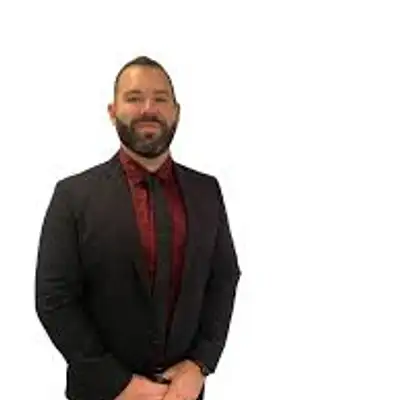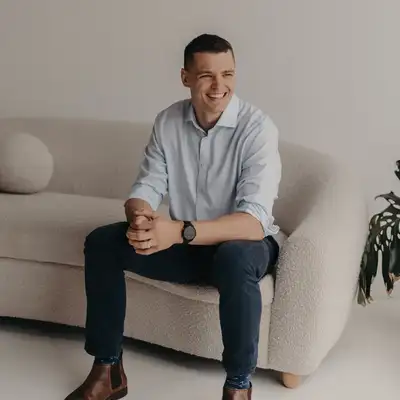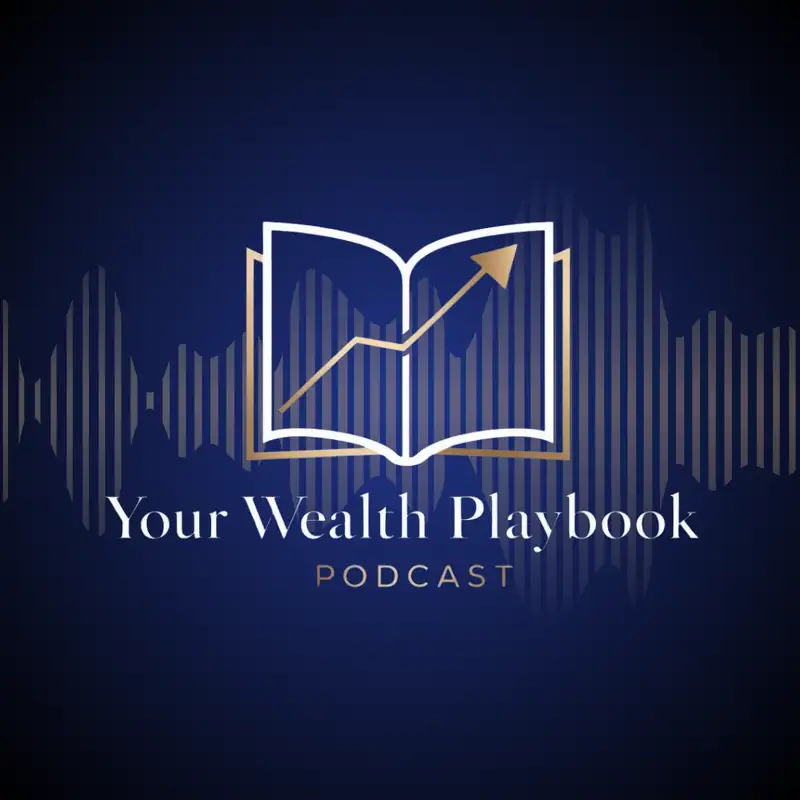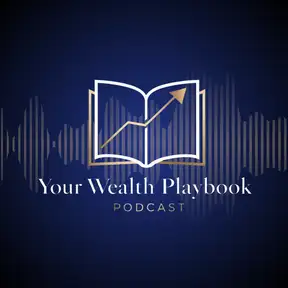Your Job Isn’t Enough. Build Passive Income Through Property
Now imagine this. You wake up. You're 50 years old. It's a Tuesday morning. You haven't had to work for the last five years.
Jared:You've been strategic in buying properties and assets in good locations that have great rental returns and a part of your plan retire fully on property rental income. That's the game plan. Building a portfolio that represents all of this. Using property to replace your income. You hear phrases like this every week about people have done so well with property over such a short period of time.
Jared:They've been able to use the rental income or the sale and the capital growth to live financially free at age 30. This is a myth. First of all, what you need here is you need active income to generate this passive income. To go out and buy property, first of all, you need to have an income. You need to have work.
Jared:You need to have a business that's doing well. Those core things need to be worked on first and foremost to generate the income and the deposits that you need to get into these property types. Is it feasible to say that you can retire on property and live through rent? Absolutely. Is it something that you're gonna see over a five year period?
Jared:Absolutely not. Today, what we're gonna do is break down how you can strategically buy assets that are a mix of capital growth and strong yield. And over a period of time, we're gonna use fifteen years as an example today, how you can strategically maneuver these to pay down debt and leave yourself with residual income that will pay you rent for life. Now the goal isn't just to go out and buy property. The goal is financial freedom.
Jared:Carefully structuring this from the start is gonna be key to it. There's two ways that you can go about this. At the moment, let's use an example and say that you earn a $120,000 a year, that's about $2,300 a week. We need to replace this $2,300 a week with rental income. That could mean three properties generating 700 to $900 a week net of expenses or five to six smaller higher yielding properties around the 500 to $600 a week mark.
Jared:Now important, we're gonna talk about these net of expenses. So obviously, you're gonna have expenses off the back of it, council rates, insurance, maintenance, property managers, and incidentals that pop up. So these numbers that we're talking about are the gross or the top level that filters through from that. Ultimately, we have to factor in all of those costs as well, and you will when you're looking at using this as a retirement income. What are the two types of properties that we need in this portfolio to balance it up?
Jared:There are capital growth opportunities where they are traditionally in your capitals or major regional centers. Capitals being New South Wales, Sydney, and major regional, we're looking at Wollongong and Newcastle. Proximity to Sydney, big bursting economies varied when it comes to industries that service them, and scarcity. So we're talking about landlocked between the sea and the escarpment or the sea and the highway we're where never gonna be built out and expanded. Traditionally, these properties and these locations do the best from a capital growth perspective because they're desirable, they've got employment opportunities, and they're near the water, which means that you can't be built out any further.
Jared:If you wanna be in a suburb that's by the ocean, there are only ever gonna be so many properties within that location that are close to works and schools. You have to pay a premium for them. And, traditionally, those premium properties go up in value quicker than those where there's a lot of ability to buy. The other properties that we're looking at are high yield or cash flow properties. Now high yield or cash flow properties traditionally are your smaller regional towns, ones where you can get in at good prices.
Jared:We'll we'll look at examples around the 500 to $600,000 mark where you can get in, comfortably get about $600 a week in rent. There's also upside to it as well. You might be able to do a renovation to improve the property a little bit more. You might be able to put a granny flat on it at some point and essentially double the income that you've got. These little cash cows are critical in our planning for having a property portfolio that's gonna replace your income.
Jared:Alright. So let's talk about scaling the portfolio. You bought your first property. It's in Wollongong, freestanding house, million dollars you've spent on it, and you've got a loan of 700,000. This is after your first purchase.
Jared:This is your next strategic purchase. You're 30 years old. You have a great property that is semi negatively geared, only just, not too bad, but you then wanna utilize the equity you've got in this to then go out and buy a cash flow property. We'd be looking at stripping out some of that equity, going and buying something in a regional area where you can spend 300 to 400,000 and have a rental income about 350 to $450 a week in rent. This property is very close to positively geared from the start.
Jared:We then look at over time with natural market growth, tapping out some equity to look at putting a granny flat on the back of that property and doubling the rental income that you've got. Now we're three years into it, we have two properties and we have three rental incomes. This is going to increase our servicing ability to go out and get lending from banks. This is gonna increase our cash flow to service our current debt so we're not dipping into our hip pockets every week to service it. It's getting closer and closer to a neutral portfolio.
Jared:This strategy rinsed and repeated over a period of fifteen years to a massive portfolio of three growth properties and three cash flow properties is gonna put you in a position that down the track you can sell one or two of those capital growth properties, use that uptick to extinguish the debts, and leave yourself with, for example, four properties, three of them being cash flow and one of them being capital growth. And the important thing here is that you're balancing up your portfolio. We're not just keeping capital growth properties, we're not just keeping cash flow. We wanna keep in both markets and keep exposed over the long term. This is one very important factor of balancing it up and not just extinguishing all of your cash flow or all of your capital growth.
Jared:You're then diversifying across assets, across locations, so you don't have a lot of exposure to any one area. Now at this point in time, we've potentially sold off one of those capital growth properties. We're looking at properties going up in value and doubling every, let's say, ten to fifteen years. We'll be super conservative moving forward. Obviously, over the last twenty, thirty years that has been accelerated a lot more, but let's just dial it down for the sake of the exercise and be really conservative with these numbers.
Jared:That property that you've bought originally at a million dollars and the next one that you've spent 1.2 on have both doubled in value. You've then got $4,500,000 worth of assets there ready to extinguish debts. Now your acquisition costs of these where you had an original loan of 700 and you've borrowed a 100% of the other one, so you borrowed 1.2 on your purchase. You're left with an extra 2 and a half million dollars to extinguish other debts that you've taken on to accrue these other properties. So let's use 500 as an example for each of them.
Jared:You could extinguish five cash flow properties with the uptick that you've had here. Important thing to remember here with any investment is time. Time is the master investor. You can sit there, you can have these properties on interest only and not touch them for a period of fifteen years. Yes, that debt will stay the same, but your property is what's appreciating over time.
Jared:As the market continues to go up, as areas that you're buying in become more scarce, the market is gonna move, and that's where you're taking advantage of time and leverage by just having it sit there and do its thing over a period of fifteen years. Let's further dive into granny flats and the ability for this to be a secret weapon when we're looking at property investment. The ability to put a second property on there and generate another income is extreme. If we have a look at the cost of holding a property, your council rates don't change, your land value stays exactly the same, so your cost of holding that property will remain. Your net yield is going to go up because your gross income is increasing but your cost of holding that property is staying exactly the same.
Jared:Yes, you'll have obviously water and sewer connections and also rental manager costs and insurance, but your council rates will stay exactly the same. So whatever we can do on that property to generate more income from that one block of land is gonna increase your gross rent, but also importantly, it's gonna increase your net rent. If you can do this as a rinse and repeat model in areas where rental properties are scarce, where people want to live, and you have the ability to do this over a long period of time, these can be an enormous secret weapon in the ability to leverage a portfolio and also have that as a little cash cow for you after. Now let's look at the sell down strategy. This is the important bit.
Jared:This is where after ten to fifteen years, we're gonna assume that your properties have doubled in value. Not financial advice. We don't have a crystal ball. But let's assume over fifteen years these properties double in value. You have one to two properties that you're utilizing to clear the debts that you've accumulated.
Jared:Let's say it's the million dollar property that you bought first and then the $1,200,000 property you bought second have both doubled in value. We've got 4 and a half million dollars give or take worth of proceeds. We've paid down those debts that you've taken on there. We've got 2 and a half million dollars over here to pay off our five cash flow properties if you wanted to do it that way or four cash flow properties and a fair chunk off the other capital growth property that you've accumulated. We've then got four properties left over, three cash flow, one capital growth that are generating us well in excess of what our original expectation was gonna be.
Jared:Two of those properties are granny flat properties that are returning year one. Let's call it a thousand dollars. By year 10, year 15, we're probably looking at 2,000, 2 and a half thousand dollars. But we'll work on today's terms. They're worth a thousand dollars.
Jared:We're left with two or three of those properties completely money in your pocket ready to go. That's income replacement, and that's build off long term planning and long term strategy. We started off with five properties over a period of seven years that were worth 3 and a half, $4,000,000. After fifteen years, you're looking at about 7 to $8,000,000 worth of value there, and restructuring that, paying down debt with the sale of those capital assets is the way that you can make that happen. So that's the playbook.
Jared:Buy well, hold long, and let time do the heavy lifting for you. Just a reminder, this is general in nature, and this is based on historic data. We don't have a crystal ball. This is not tailored financial advice. And if you do want us to discuss your current financial situation, make sure you reach out.
Kerrod:Thanks for tuning into another episode of Your Wealth Playbook. If you could help us out in any way, the biggest benefit that Jared and I, and also Danny will get, is if you can subscribe to this podcast on your favorite platform and maybe share it. Send it to somebody that would benefit.
Jared:The information in this podcast is general and does not consider your personal objectives, financial situation or needs. Before making financial decisions, consider whether it is appropriate for you and seek professional advice. Past performance is not a reliable indicator of future results. If you would like to discuss today's topic further, reach out and we would love to help.
Kerrod:Jared and I have not assessed your individual circumstances. Therefore, this podcast is general in nature and for informational purposes only. This is not personal financial advice. There are so many advisors and brokers in Australia. You'll find one that you resonate with, but this is for informational purposes only, Or maybe just use Jarrab and I.
Creators and Guests



